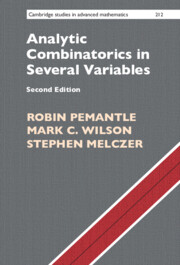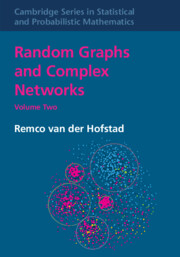Refine search
Actions for selected content:
48581 results in Computer Science
End-to-end deep learning-based framework for path planning and collision checking: bin-picking application
-
- Article
-
- You have access
- Open access
- HTML
- Export citation
ROB volume 42 issue 3 Cover and Back matter
-
- Article
-
- You have access
- Export citation
ROB volume 42 issue 3 Cover and Front matter
-
- Article
-
- You have access
- Export citation
Identifying compound weather drivers of forest biomass loss with generative deep learning
- Part of
-
- Journal:
- Environmental Data Science / Volume 3 / 2024
- Published online by Cambridge University Press:
- 12 February 2024, e4
-
- Article
-
- You have access
- Open access
- HTML
- Export citation
Decentralized crowdsourcing medical data sharing platform to obtain chronological rare data
-
- Journal:
- Data & Policy / Volume 6 / 2024
- Published online by Cambridge University Press:
- 12 February 2024, e9
-
- Article
-
- You have access
- Open access
- HTML
- Export citation
Understanding precipitation changes through unsupervised machine learning
- Part of
-
- Journal:
- Environmental Data Science / Volume 3 / 2024
- Published online by Cambridge University Press:
- 12 February 2024, e3
-
- Article
-
- You have access
- Open access
- HTML
- Export citation
On the use of smart hybrid contracts to provide flexibility in algorithmic governance
-
- Journal:
- Data & Policy / Volume 6 / 2024
- Published online by Cambridge University Press:
- 12 February 2024, e8
-
- Article
-
- You have access
- Open access
- HTML
- Export citation
Design and assistive technology: a tinder match waiting to happen
-
- Journal:
- Design Science / Volume 10 / 2024
- Published online by Cambridge University Press:
- 12 February 2024, e5
-
- Article
-
- You have access
- Open access
- HTML
- Export citation

Analytic Combinatorics in Several Variables
-
- Published online:
- 08 February 2024
- Print publication:
- 15 February 2024

Random Graphs and Complex Networks
-
- Published online:
- 08 February 2024
- Print publication:
- 08 February 2024
Frontmatter
-
- Book:
- Random Graphs and Complex Networks
- Published online:
- 08 February 2024
- Print publication:
- 08 February 2024, pp i-iv
-
- Chapter
- Export citation
9 - Implementing Text Classification Using Word Embeddings
-
- Book:
- Deep Learning for Natural Language Processing
- Published online:
- 01 February 2024
- Print publication:
- 08 February 2024, pp 132-146
-
- Chapter
- Export citation
Frontmatter
-
- Book:
- Deep Learning for Natural Language Processing
- Published online:
- 01 February 2024
- Print publication:
- 08 February 2024, pp i-iv
-
- Chapter
- Export citation
13 - Robot Ethics
- from Part three - Advanced Topics and the Future of Mobile Robotics
-
- Book:
- Computational Principles of Mobile Robotics
- Published online:
- 19 March 2024
- Print publication:
- 08 February 2024, pp 333-341
-
- Chapter
- Export citation
Acknowledgments
-
- Book:
- Computational Principles of Mobile Robotics
- Published online:
- 19 March 2024
- Print publication:
- 08 February 2024, pp xvii-xviii
-
- Chapter
- Export citation
16 - Neural Architectures for Natural Language Processing Applications
-
- Book:
- Deep Learning for Natural Language Processing
- Published online:
- 01 February 2024
- Print publication:
- 08 February 2024, pp 246-271
-
- Chapter
- Export citation
6 - Best Practices in Deep Learning
-
- Book:
- Deep Learning for Natural Language Processing
- Published online:
- 01 February 2024
- Print publication:
- 08 February 2024, pp 87-106
-
- Chapter
- Export citation
8 - Small-World Phenomena in Preferential Attachment Models
- from Part III - Small-World Properties of Random Graphs
-
- Book:
- Random Graphs and Complex Networks
- Published online:
- 08 February 2024
- Print publication:
- 08 February 2024, pp 326-380
-
- Chapter
- Export citation
